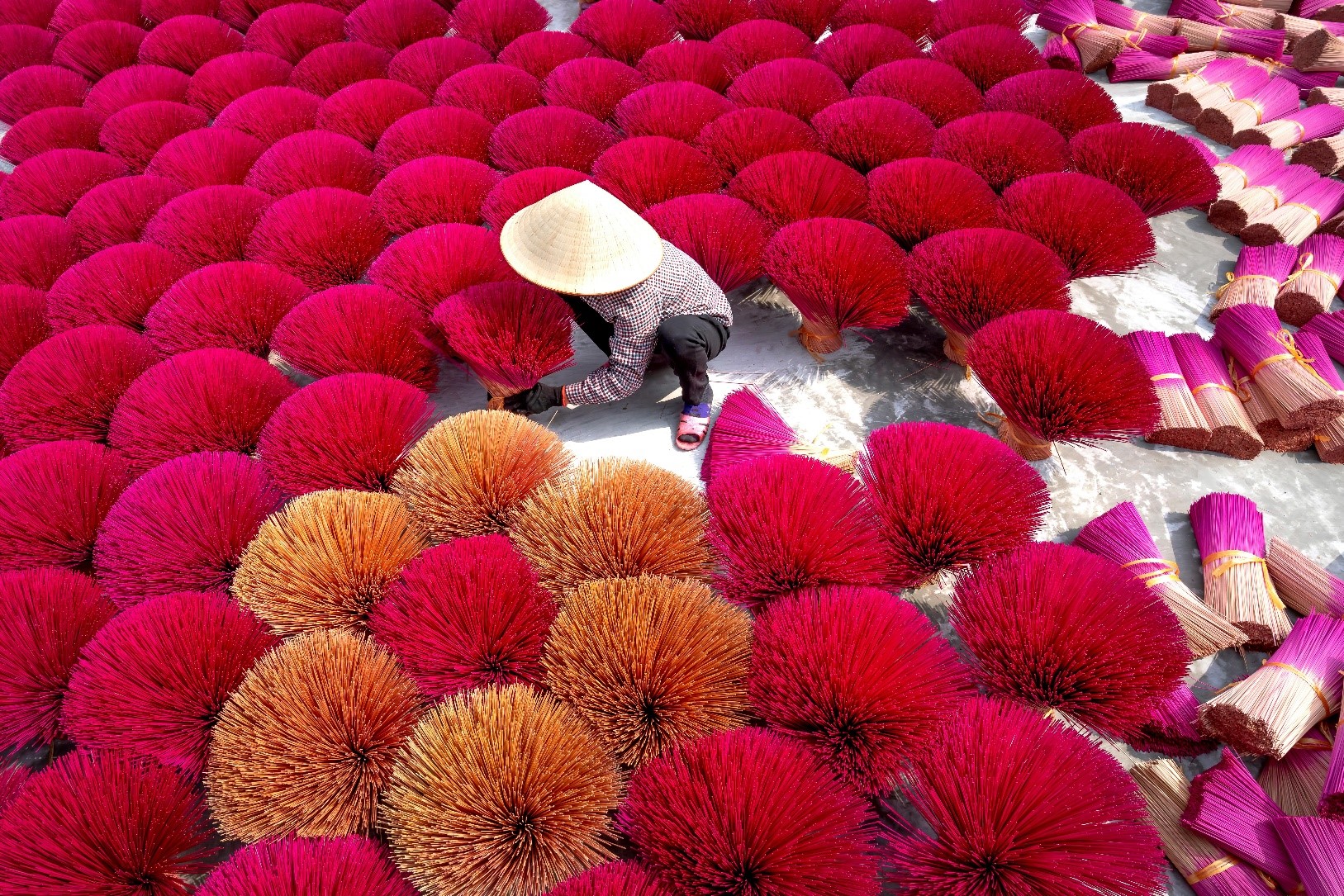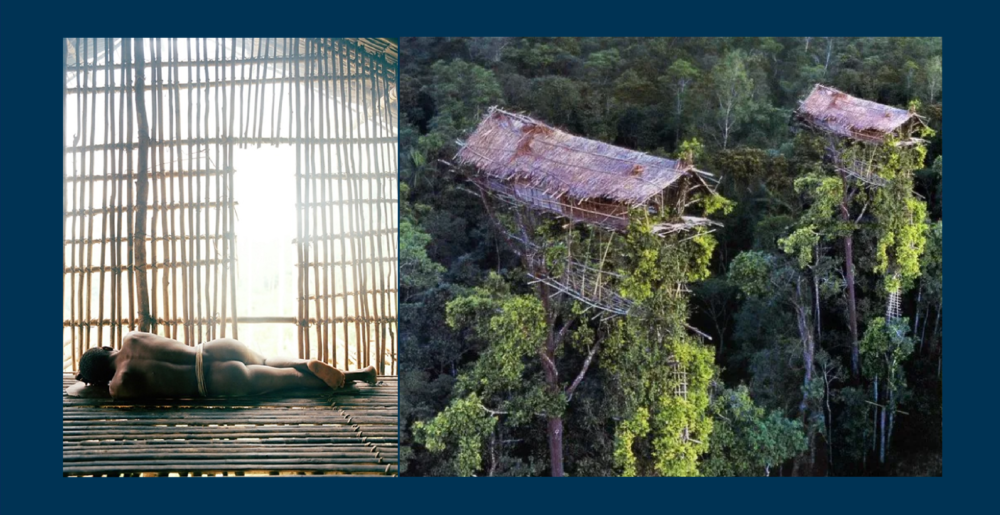Image: Quang Nguyen
In Ha Dong district, 35km from Hanoi centre, the traditional craft of Joss-Stocks -incense- making is more than 100 years employing 300 families in the area- producing 80 tons of incense per month.
Incense- the burning of aromatic spices – has a rich history in modern Asia and the antiquity of Ancient Ruins. It is considered a sacred bridge to connect the material world with the spiritual world of heaven, ancestors, and gods.
Today, there are a variety of forms including sticks, joss sticks, cones, coils, powders, rope, rocks/charcoal, and smudge bundles.
Historically, incense burning dates back to 3,500 years ago from the Indus region Bronze Age, where brass oil burners for incense were discovered in Egypt- oils from scented resin balls which were prevalent in ancient Egyptian tombs – and were introduced to Vietnam via China about 2,000 years ago.
From the 7th century BC to the 2nd century AD, a significant trade network known as the “Incense Road” or “Incense trade route” was in operation. This extensive network of maritime and terrestrial routes linked the Mediterranean with the Levant, Egypt, Northeastern Africa, Arabia, and India. The primary commodities transported were Arabian frankincense and myrrh, which is why it was named so. Although other eastern goods were also transported, these two were the most prevalent. This trade network continued to function until the collapse of the Roman Empire.
In the 6th century, Korean Buddhist monks introduced incense to Japan. Initially, its use was exclusive to the high aristocracy. However, by the 14th century, samurais were permitted to scent their helmets and armors, a practice believed to bestow an “aura of invincibility”.
Incense production has a rich heritage in Vietnam, deeply tied to the nation’s culture and spiritual practices.

The Vietnamese people, and most Asians – with Westerner participants rising – visit temples and practice incense burning, hold a deep-seated belief in the existence of unseen forces that accompany them in their lives, and communicate their heartfelt desires to these entities through the smoke of burning incense. Praying for success in study and business, good health, and money/ prosperity.
An incense stick serves as a sacred link between the realm of the living and the spiritual world, making it an essential part of various occasions, including death anniversaries and the Lunar New Year Festival holiday.

Image source: Frankie Foto..
The process of crafting incense is meticulous, starting with the selection of high-quality natural ingredients. An incense stick consists of a sturdy bamboo core surrounded by a layer of aromatic substances. The craftsmen in these villages are skilled in choosing the best materials and crafting each stick with precision.
Today, incense in Vietnam is more than just a common commodity; it is a spiritual product integral to the lives of the Vietnamese people. The tradition of incense burning has played a significant role in shaping and preserving the national identity of Vietnam- as well as an economic benefit to communities.
Health Warnings on Excessive Incense Inhalation:
In Asian countries where Buddhism and Taoism are mainstream religions, incense burning is a daily practice. A typical composition of stick incense consists of 21% (by weight) of herbal and wood powder, 35% of fragrance material, 11% of adhesive powder, and 33% of bamboo sticks. Incense smoke (fumes) contains particles/matter, gas products and many organic compounds.
On average, incense burning produces particulate matter greater than 45 mg/g burned as compared to 10 mg/g burned for cigarettes.
The gas products from burning incense include CO, CO2, NO2, SO2, and others. Incense burning also produces volatile organic compounds, such as benzene, toluene, and xylenes, as well as aldehydes and polycyclic aromatic hydrocarbons (PAHs). The air pollution in and around various temples has been documented to have harmful effects on health. When incense smoke pollutants are inhaled, they cause respiratory system dysfunction. Incense smoke is a risk factor for elevated cord blood IgE levels and has been indicated to cause allergic contact dermatitis. Incense smoke also has been associated with neoplasm and extracts of particulate matter from incense smoke are found to be mutagenic in the Ames Salmonella test with TA98 and activation.
To prevent airway disease and other health problems, people should reduce the exposure time when they worship at the temple with heavy incense smoke and ventilate their house when they burn incense at home.
Source: NCBI
























